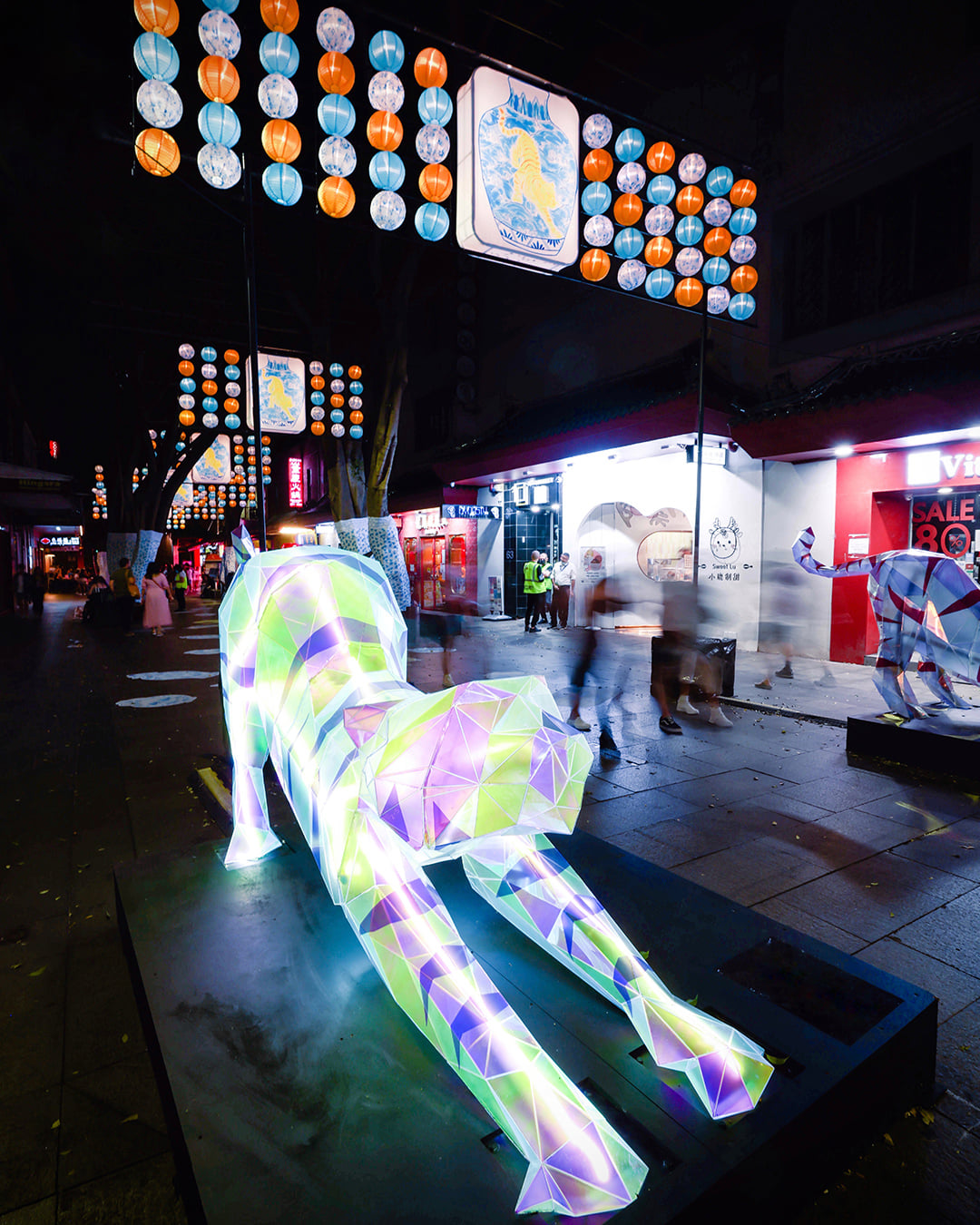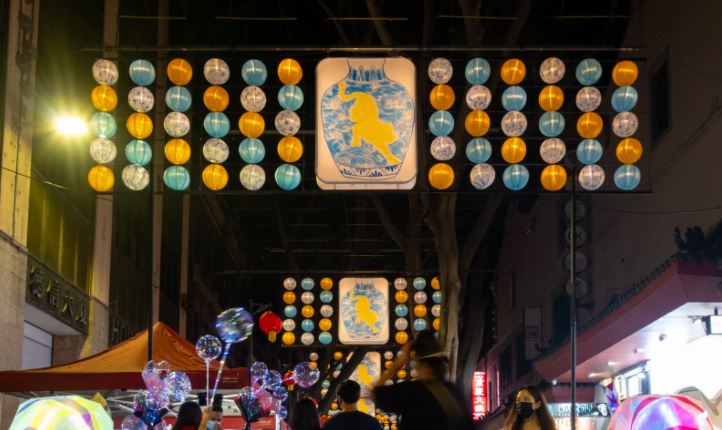The traditional colours for the Lunar New Year are red and gold, for good fortune, happiness, and prosperity. Therefore, when white and blue lanterns appeared at the Sydney Lunar Festival, and trees were wrapped in white cloth as part of the artist in charge’s vision, more than a few heads turned.
Unfortunately, these colours are none too auspicious in Chinese culture, especially white, which is a colour worn at funerals and is associated with death.

This year’s colour scheme has not gone over well with some in Sydney’s Chinese-Australian community, says a report in the South China Morning Post (SCMP), although the artist behind the lanterns and art installation, Ms Susan Chen, has defended her work as “‘entirely appropriate.”
Ms Chen designed the scenic overlay at Chinatown, which she entitled, “Contained.”
“In Chinese culture, the tiger is a symbol of power, strength and positive energy; the greatest earthly power and the physical embodiment of yang. In 2022, the tiger is in its water element. Water is understood to be the most yin in character of the five elements in nature.
Chen’s artwork, Contained, brings together these two elements of yin and yang, where both tiger and water share common opposing characteristics such as tranquillity, stillness and calmness, while also capable of demonstrating great strength, ferocity, and power. The artwork also includes narratives around the artists’ cross-cultural experience as an Asian-Australian,” the city’s website reads.

However, the artist’s vision and chosen colours may drive visitors away from the festival, SCMP quotes community leader and first Chinese-born elected MP Helen Sham-Ho as saying.
“People are saying they don’t want to go Chinatown because they don’t want to go for a funeral.”
She called the artwork “a laughing stock,” and said that when she spoke to the city council about the colour scheme, the tree wraps were removed.
The lanterns, however, are still there.
SCMP also quoted businessman Richard Yuan, who said, “I never thought the colour was appropriate in any Chinese celebration, let alone new year celebrations.”
“In Chinese traditions, white and blue colours are for funerals! That’s bad luck!,” pointed out one netizen on the City of Sydney Facebook page.

The artist, however, has said, “It may seem an unexpected Lunar New Year colour palette to traditionalists, but it is one that is deeply rooted in traditional Chinese motif, and entirely appropriate for the subject matter. It is an attempt to enliven and broaden the traditions surrounding Lunar New Year as inclusive of new narratives and new experiences,” she added.
Ms Chen’s vision is also explained in a Jan 31 article in the Australian Arts Review, where she explains that she wanted to show the tiger’s “gentler side,” in the context of the Covid-19 pandemic having turned the world “upside down.”
“Tigers can be graceful, calm and beautiful… Everyone’s life has been turned upside down and I wanted to find calm and balance, while presenting the water tiger through traditional vases and urns of Chinese culture.
I hope the display draws people back into the area and gets them into the local shops and restaurants.
“It’s been tough on so many levels – economically and the everyday racism that blames Asians for the pandemic has been so confronting for Asian Australians. I hope this goes some way to creating a sense of unity and hope for the future,” she added. /TISG

